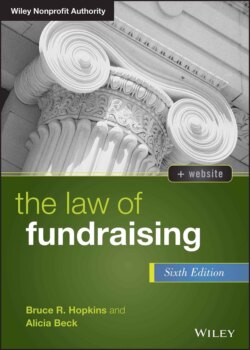Читать книгу The Law of Fundraising - Bruce R. Hopkins - Страница 16
(b) Noncash Gifts Statistics
ОглавлениеThe IRS, in late May, 2021, made public its most recent data, for tax year 2018, on the extent of noncash charitable contributions by itemizing individuals.25 For that year, these individuals reported $83.5 billion in noncash charitable gifts on 9.2 million returns.
(i) Form 8283 Reporting. About 46 percent of these returns carried $70.8 billion in charitable contributions to their Schedule A using Form 8283. The number of the returns filed with Form 8283 declined by 52.4 percent and the amount claimed by these taxpayers decreased by 15.9 percent in relation to 2017. These declines are attributed, at least in part, to the increase in the standard deduction amount enacted in late 2017. Taxpayers using the standard deduction do not, of course, file Schedule A or Form 8283. The average amount of reported noncash contributions per return increased from $9,490 to $16,762 (a 76.6 percent increase).
(ii) Types of Noncash Contributions. Contributions of corporate stock, mutual funds, and other investments accounted for 60.3 percent ($42.7 billion) of these gifts. Stock contributions alone aggregated $38.6 billion (54.5 percent of the total). The second largest of these categories was clothing, totaling $6.9 billion (9.7 percent). In third place are gifts of easements, valued at $6.5 billion (9.2 percent).
Corporate stock gifts averaged $254,305 per return. Clothing donations averaged $2,305 per return. Conservation easements had the largest average contribution amount of $660,666 per return, with about 9,840 returns carrying contributions to a Schedule A. Gifts of other investments reflected the second-largest average donation amount of $478,230 per return, based on approximately 3,520 returns that carried $1.7 billion in contributions to Schedule A.
(iii) Decline in Returns and Amounts. From 2017 to 2018, the number of tax returns filed with noncash charitable contributions declined for nearly all categories of these gifts, the exception being for those of easements. Returns with corporate stock gifts declined by 26.1 percent. Returns with clothing donations, the second-largest gift category, dropped by 54.7 percent.
Contribution amounts declined for nearly all categories, the exceptions being for easements, airplanes, boats, and other vehicles. Specifically, the amount attributed to gifts of clothing fell by 42.2 percent.
(iv) Average Contribution Amounts. The average contribution amount per return for noncash contributions increased 76.6 percent, from $9,490 per return with an attached Form 8283 in 2017 to $16,762 in 2018. Average stock gifts grew from $205,503 per return in 2017 to $254,305 in 2018 (33.4 percent). The average amount claimed for clothing gifts rose 27.5 percent, from $1,808 to $2,305 per return; average household donations increased from $1,787 to $2,514 per return (40.7 percent).
Although easement contributions had the largest average amount carried per return to Schedule A in 2017 and 2018, this amount declined 11.5 percent, from $746,519 in 2017 to $660,666 per return in 2018. The only other types of charitable contributions that showed declines in average amounts per return were other investments ($669,230 down to $478,230) and airline tickets and miles ($4,879 down to $2,960).
(v) Types of Charitable Organizations. In recent years, foundations and large organizations have consistently been the greatest beneficiaries of noncash charitable contributions. The amounts for 2018 are $21.7 billion and $9.7 billion, respectively. In 2018, however, donor-advised funds were the recipients of the second-largest contribution amount—$11.3 billion.
Foundations received 30.6 percent of these gifts on nearly 65,000 returns, with an average contribution per return of $334,747. Donor-advised funds received 16 percent of these gifts on about 71,860 returns, having an average gift of $157,921 per return. Contributions to large organizations were reported on 3.3 million returns, resulting in the smallest average amount of $2,938 per return.
Generally, all categories of charitable organizations experienced declines in donation claims for these types of contributions on tax returns from 2017 to 2018. There were two exceptions. One was for contributions to environmental and animal-related organizations, which increased by 44.8 percent. The other was an 8.7 percent increase in these contributions to donor-advised funds.
Most categories of charitable organizations received more of these contributions claimed on returns in 2017 than they received in any year since 2007. Between 2009 and 2017, the amount of these gifts more than doubled for six of the organization types. In 2018, these trends changed significantly, in that most organization types received fewer gift amounts. Contributions to donor-advised funds, however, experienced the highest growth, increasing from $1.8 billion in 2009 to $11.3 billion in 2018.
